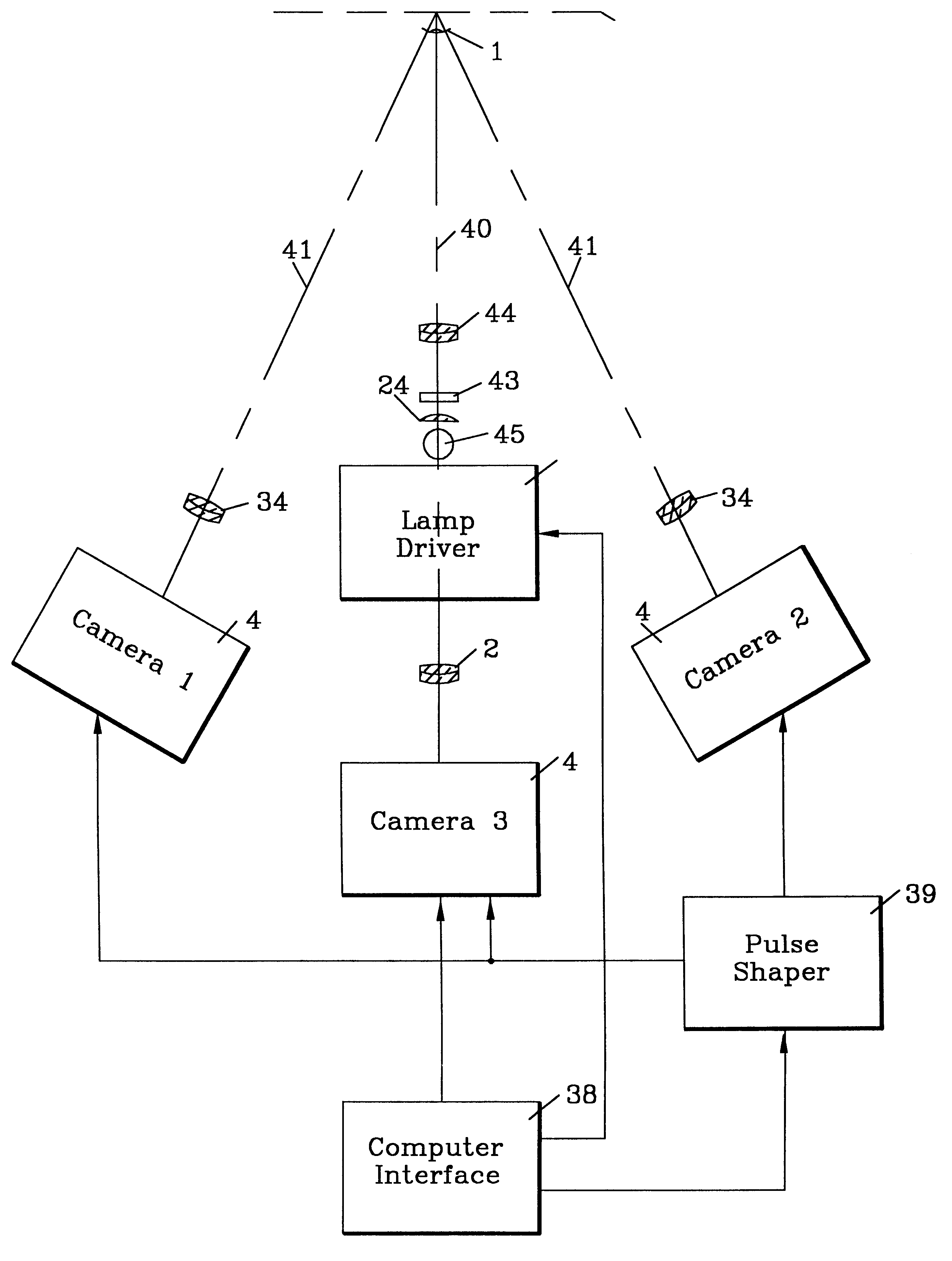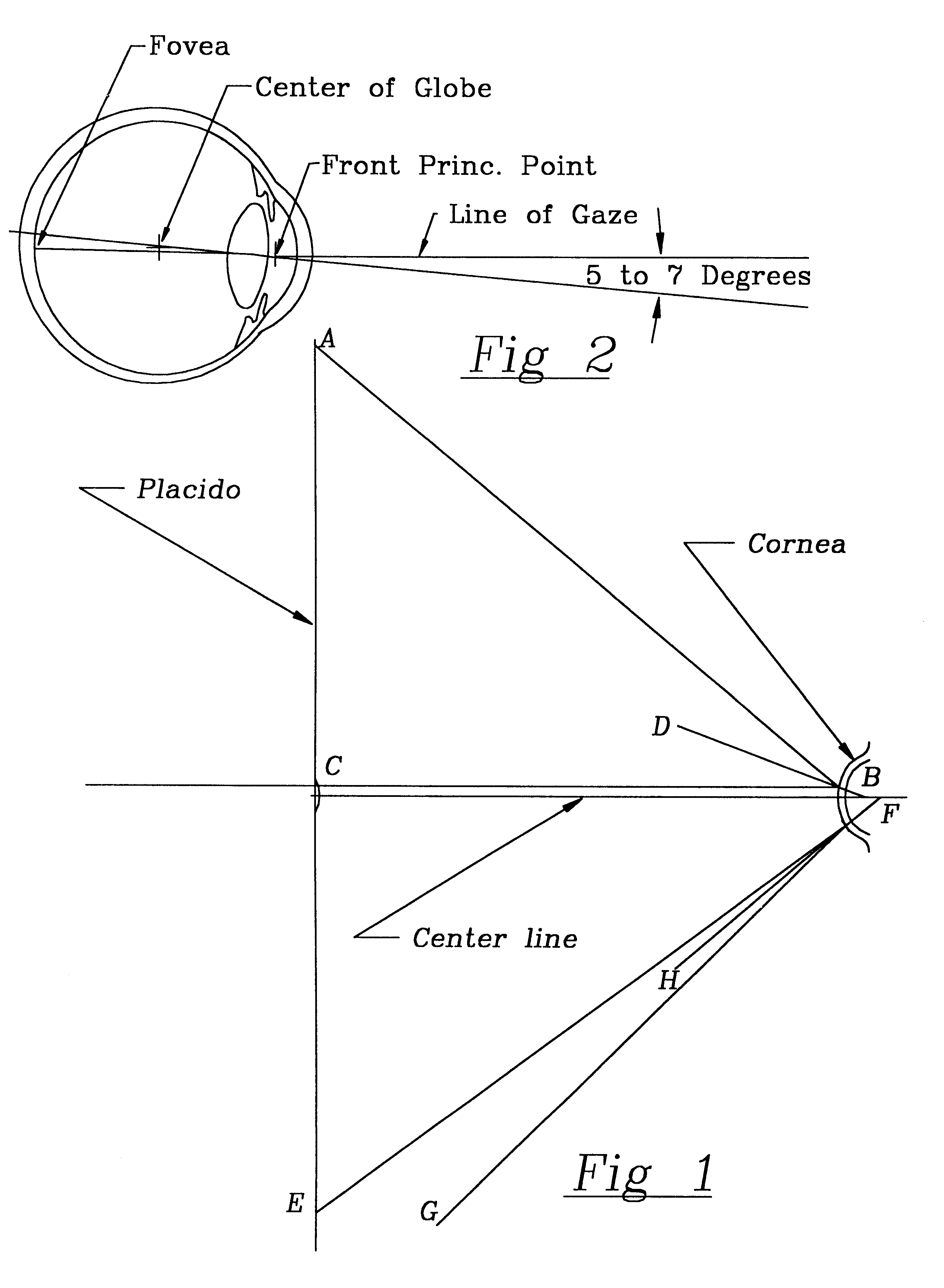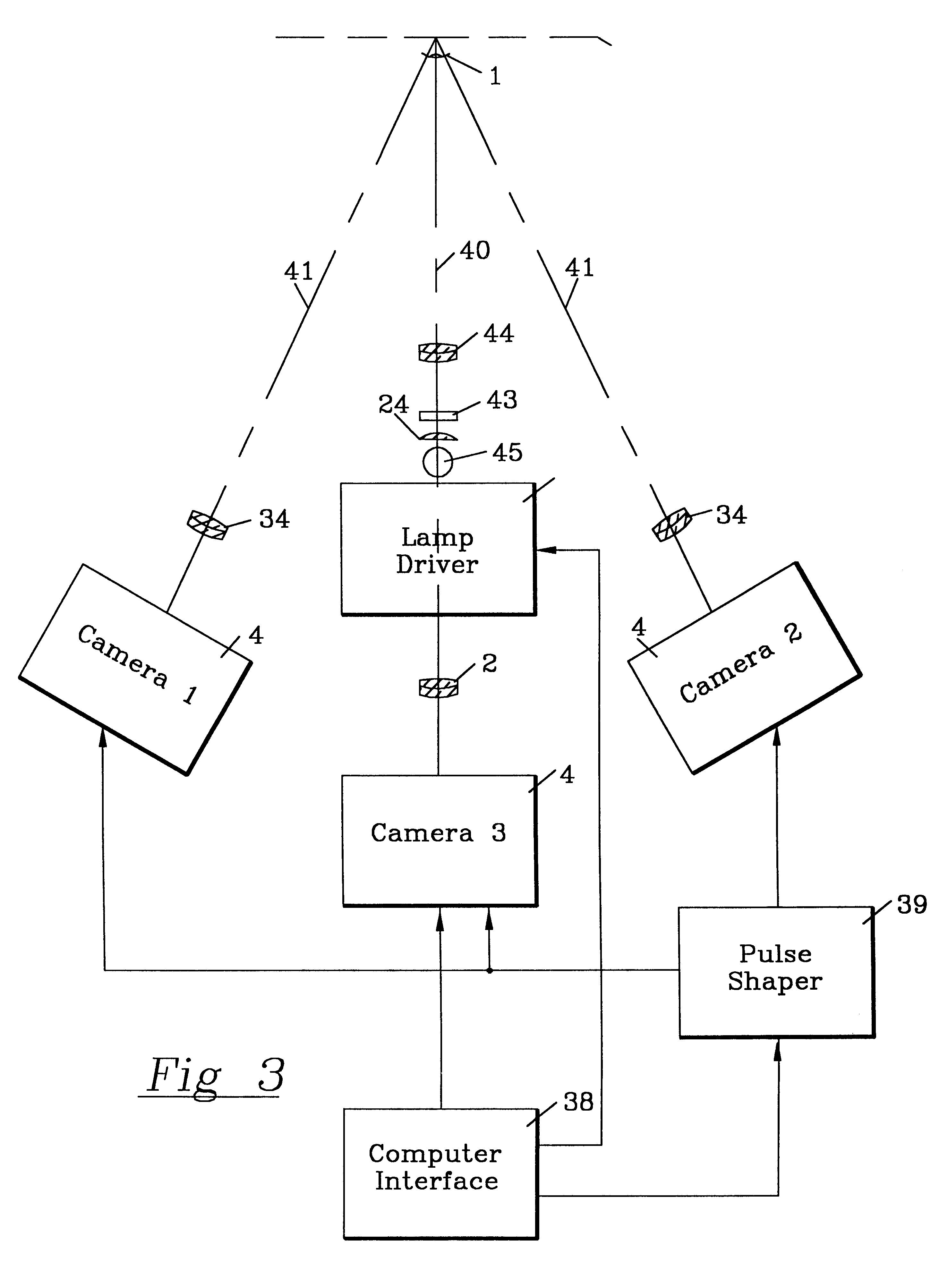Keratometer/pachymeter
a keratometer and a technology of pachymetry, applied in the field of keratometer/pachymeter, can solve the problems of inaccurate method, limited use, and inability to automatically assess the data of the apparatus,
- Summary
- Abstract
- Description
- Claims
- Application Information
AI Technical Summary
Problems solved by technology
Method used
Image
Examples
Embodiment Construction
Referring now in more detail and by reference characters to the drawings, and presently to FIG. 2, there is a small area of the retina there is a concentration of the cone type photo-receptor cells which are synapsed on an almost one to one ratio with nerve fibers. This central vision area is termed the fovea. It is at the fovea that the critical vision associated with reading and similar optical tasks takes place. The optical axis of the eye does not coincide with the fovea, but rather is displaced by five to seven degrees. The main light focusing power of the eye is contained in the cornea and the fluid filled anterior chamber in front of the crystalline lens. The surface curvature and thickness of the cornea determines the effective focal length of the optical system and deformation from ideal form results in reduced visual acuity if uncorrected by spectacles, contact lenses or surgical intervention. The lens is mounted in a network of zonules or fibers connected to a muscle syst...
PUM
 Login to View More
Login to View More Abstract
Description
Claims
Application Information
 Login to View More
Login to View More - R&D
- Intellectual Property
- Life Sciences
- Materials
- Tech Scout
- Unparalleled Data Quality
- Higher Quality Content
- 60% Fewer Hallucinations
Browse by: Latest US Patents, China's latest patents, Technical Efficacy Thesaurus, Application Domain, Technology Topic, Popular Technical Reports.
© 2025 PatSnap. All rights reserved.Legal|Privacy policy|Modern Slavery Act Transparency Statement|Sitemap|About US| Contact US: help@patsnap.com



